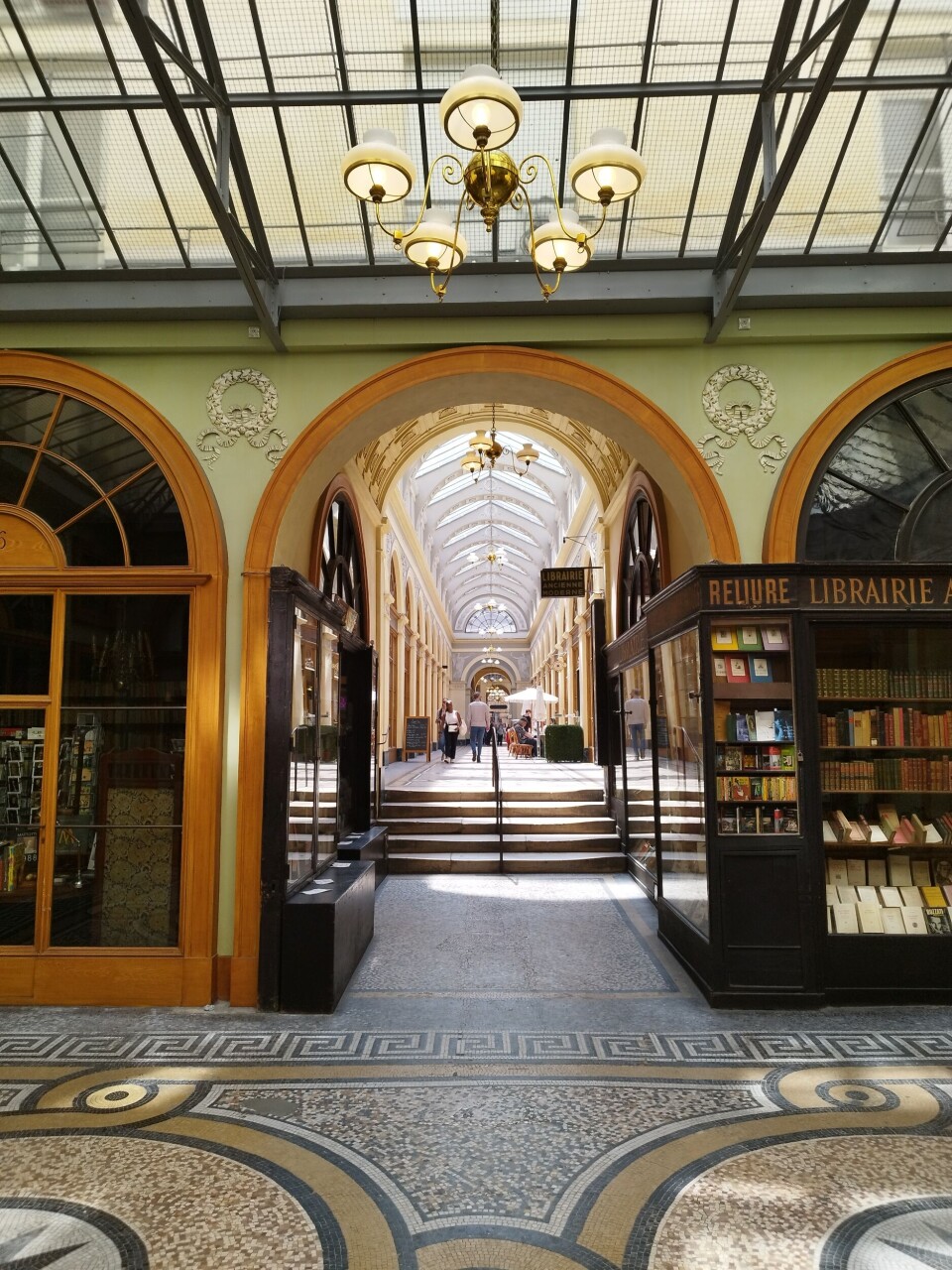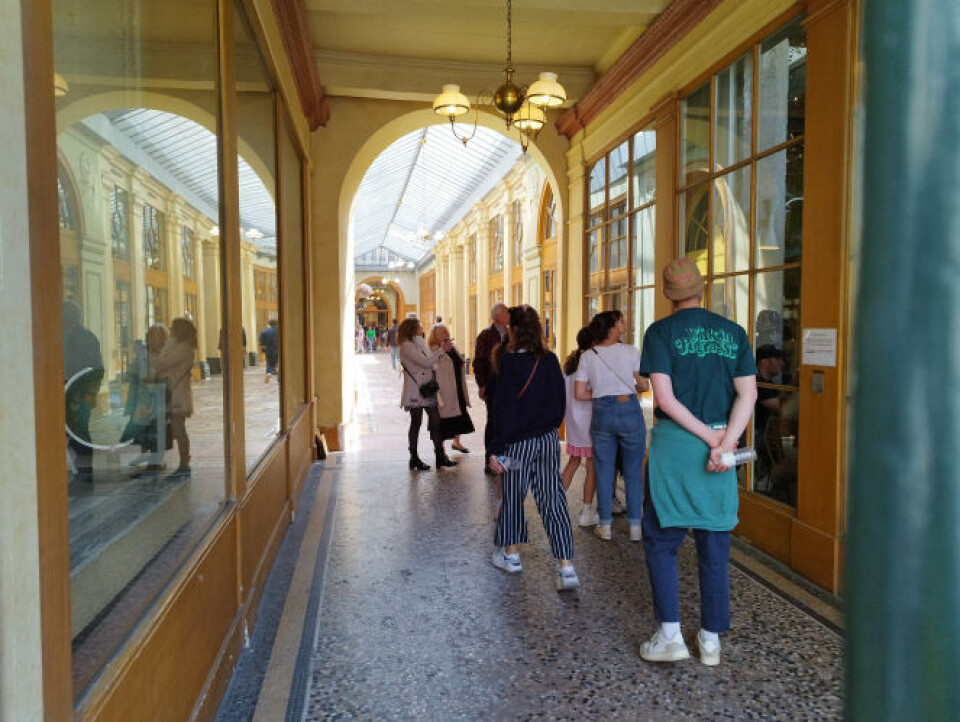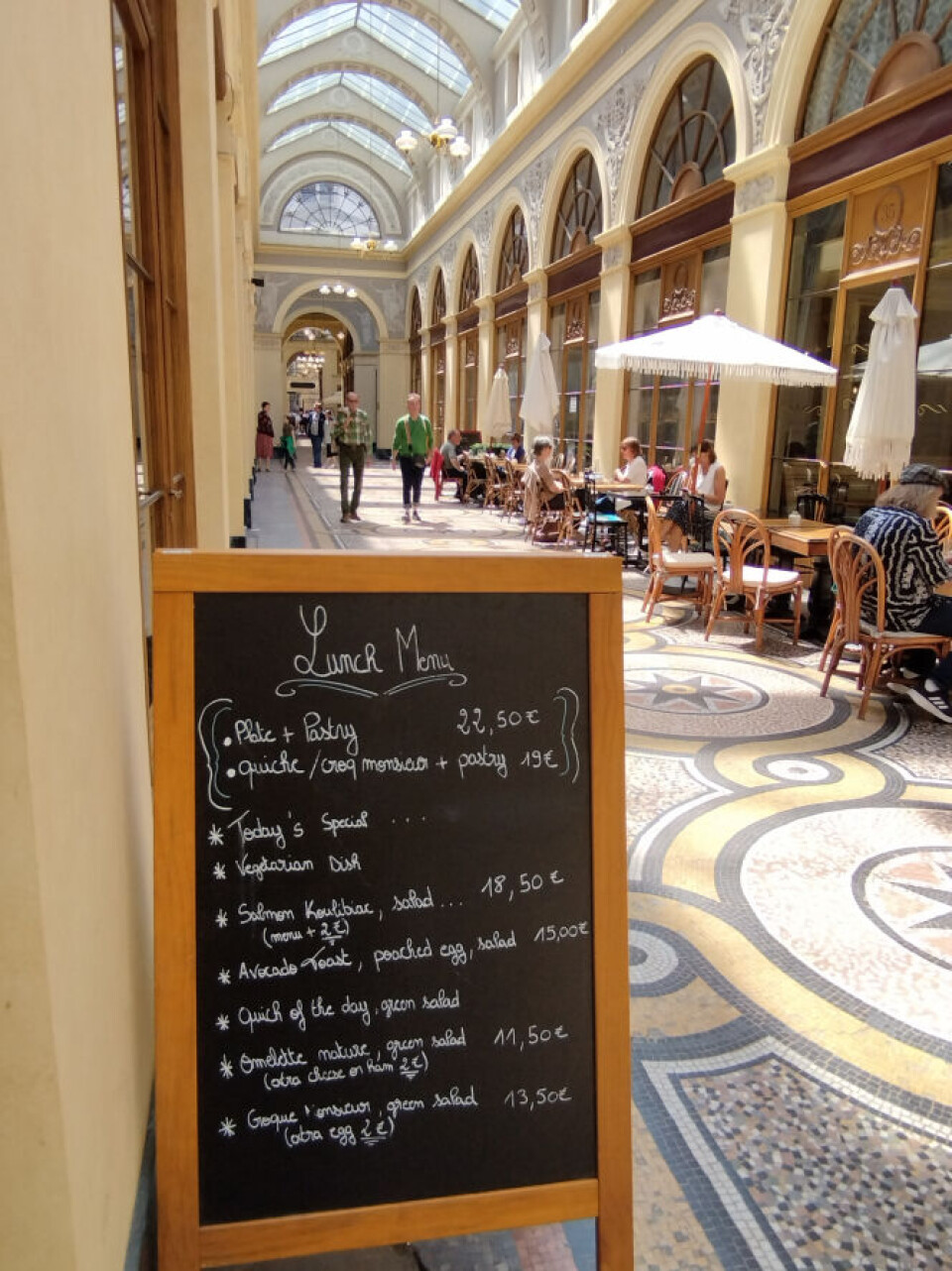-
Paris metro station Villejuif-Gustave Roussy named world’s most beautiful
International architecture award supported by Unesco given to stop on metro line 14
-
Commuter boat service planned for Paris
‘River metro’ could soon become a reality on the Seine
-
Zinc rooftops of Paris find new life as artworks
Customers can take home a piece of the capital’s iconic UNESCO-listed skyline
Restored Paris passageway has become a magnet for Instagrammers
Social media fame is the latest chapter in Galerie Vivienne’s chequered history as a shopping arcade

It has been 200 years since building began on the Paris shopping arcade Galerie Vivienne, during which time its relationship with locals has often been fraught.
These days, the ornate décor makes it popular social media fodder. Exquisite mosaic-covered floors, elegant half-moon windows, depictions of nymphs and goddesses, and beams of sunlight streaming down from the glass roof combine to create an irresistible catwalk for Instagrammers, shoppers, and tourists.
Galerie Vivienne was part of an architectural trend that turned humble passageways into profitable businesses by offering Parisians a faster, cleaner, weatherproof way to wander from one street to the next, and tempting them with shopping opportunities during the shortcut.
Read more: Find Paris’s secret village hidden in the bustling Marais district
Parisian flâneur and the Influence of arcades
They helped fuel the image of the Parisian flâneur, and were in line with a fashion for similar shopping arcades elsewhere in western Europe at that time, including London’s Burlington Arcade, Galeries Royales Saint-Hubert in Brussels, The Passage in St Petersburg, the Galleria Umberto I in Naples, and the Galleria Vittorio Emanuele II in Milan.
Construction on Galerie Vivienne started in 1823 and it opened three years later as Galerie Marchoux, so-called for its proprietor, Maître Marchoux, president of the chamber of notaries. It occupied a prime location between Rue Vivienne and the Palais Royal, playground of the rich and privileged, in the capital’s 2nd arrondissement.
It was the Palais Royal’s landlord, Philippe d’Orléans, a cousin of Louis XVI, who had the idea to surround the gardens with arcades, including the city’s first shopping galerie, La Galerie de Bois.
These galeries were very different from mere passageways. “Passages were abolished,” said writer Auguste Luchet in 1835. “The word had the smell of the people, and mangled aristocratic mouths. Galeries were more appropriate to the perfumed conversation of high society.”

From the start, Galerie Vivienne was one of the most attractive of the city’s arcades, built in a neo-classical Pompeian style with gilt details, mirrors, and mosaic tiles. It boasted 70 shops catering for everything from luxury clothing and haberdashery to wine and books. There were also residents above the shops – including one Eugène François Vidocq, a notorious criminal turned detective and remembered as the father of modern criminology, the first private detective, and the model for a string of fictional characters, including Victor Hugo’s Valjean and his persecutor Javert.
By the late 1860s, there were well over 150 covered passages like this in Paris but their appeal did not last. They often became linked to prostitution, theft, and gambling, but their future was more seriously undermined by the rise of big department stores such as La Samaritaine and Le Bon Marché. Other arcades were knocked down to make room for new, wider boulevards as part of Haussmann’s overhaul of the city.
Galerie Vivienne survived because it had been bought by the Institut de France. However, while it escaped demolition, from the late 1890s Parisians largely turned their backs on it. It was not until 1970 when the then up-and-coming fashion designer Kenzo opened a boutique there that the arcade’s fortunes began to change. It later lured Jean Paul Gaultier in too, and he opened his first boutique there.
Galerie Vivienne was eventually listed as a monument historique in 1974 but continued to stay under the radar for several more years.
Read more: Which is your favourite monument in France?
Resilience built with time
François Jousseaume, of Librairie Jousseaume, remembers the arcade when it was still struggling. His bookshop has been here since Galerie Vivienne first opened in 1826. Then, it was known as Librairie Petit-Siroux before Mr Jousseaume’s great-grandfather bought the shop at the turn of the last century. François took over the reins in 1987 when he replaced his grandfather, and says the arcade felt strangely detached from bustling city life outside. With little to no traffic noise to be heard, “it sometimes felt like time had been frozen,” he says.
Patrice de Moncan, a historian who has written several books on Parisian passageways, remembers this period well. “When I took taxis in the 1980s, drivers did not know Galerie Vivienne. I was the one guiding them,” he says.

Vivienne’s decline was by no means exceptional. Nearby Galerie Colbert, built in 1827 to compete with Vivienne, was closed to the public in the late 1970s after falling into disrepair. Its condition precluded restoration so it was demolished and rebuilt identically in 1985.
Renovation came later – in 2016 – to Galerie Vivienne, but the work was not universally welcomed. The whirlwind of repair, refurbishing, and reconstruction, costing €864,000, faced a huge backlash before it had even been completed. Walls were repainted in lighter green, original panelling replaced by imitations, and the old vaulted ceiling swapped for greenhouse glass.
Controversy and restoration
Le Figaro decried the project, insisting the arcade had “lost its identity”. Former culture minister Jack Lang sent a letter to the then-minister Audrey Azoulay asking her to halt the renovation. He claimed the work would “result in the definitive disappearance of protected heritage... essential to the charm and identity of Paris”. A petition was also launched, reaching 6,500 signatures in 2016 and branding the works an “attack on the architecture of a protected space”.
However, architect François Jeanneau, in charge of the renovation, told The Connexion he had combed through archives to reproduce, as faithfully as possible, the spirit of the arcade’s original 19th-century design.
“It has always been something of a theatrical set – flashy – to attract consumers to the shops,” he says. “There was no ‘invention’ in what we did.”
Mr Jeanneau adds that in some parts of the arcade they found six to seven layers of paint, reflecting passing fashions over the years since it was built. “I think that what we have done is in keeping with the look of the 19th century,” he says.
Many, however, still believe the modern-day arcade bears only a passing resemblance to its past. Mr de Moncan, for one, insists the atmosphere in Galerie Vivienne is the exact opposite of the one of intimacy and charm that reigned 200 years ago, and bemoans a “lack of feeling of grandeur and pride”.
Looking ahead, the arcade’s current owners – the Académie des Beaux-Arts and a group of individual shareholders grouped under a property management company – clearly feel that tourism is key to its survival. Since 2019, it has been officially twinned with Galeries Royales Saint-Hubert in Brussels to raise its profile further – and to keep those Instagrammers coming.
Related articles
Explore 13 French landmarks with 3D Google Maps
‘France’s answer to Primark’ plans to expand with shops across country
No to shopping ‘city’ outside Paris
























